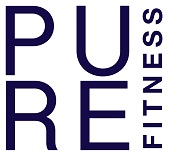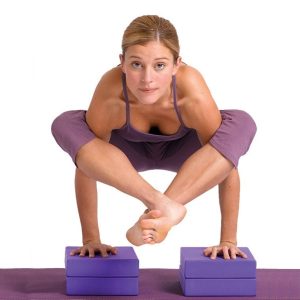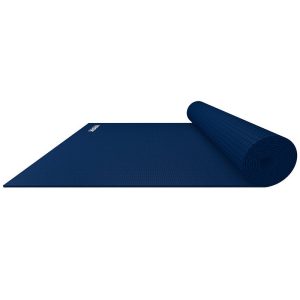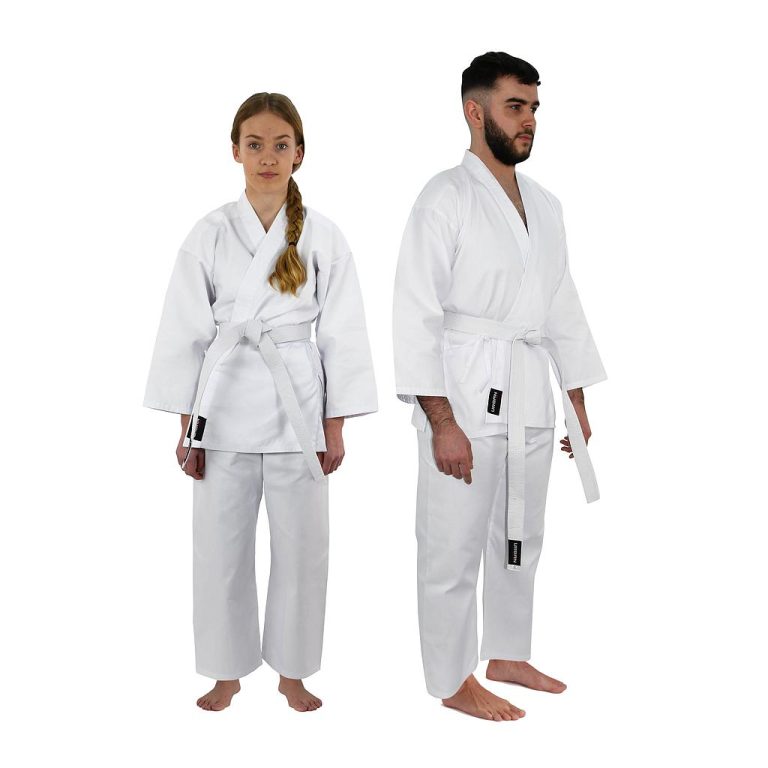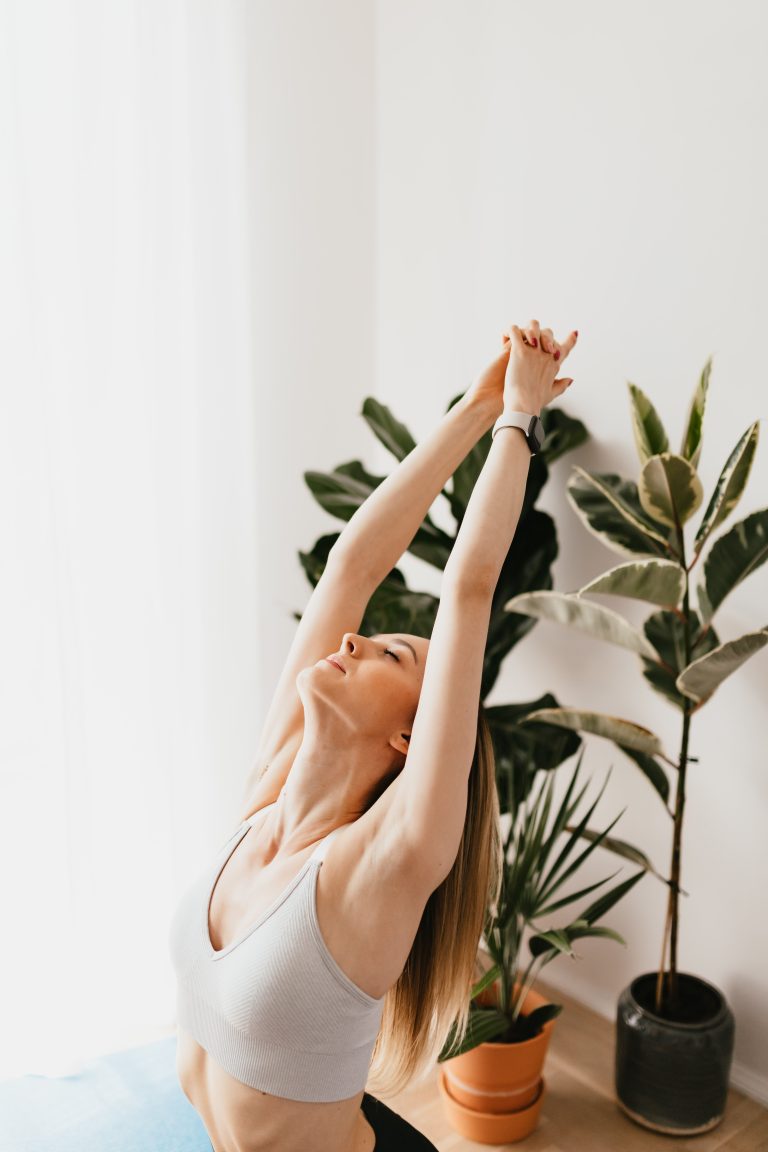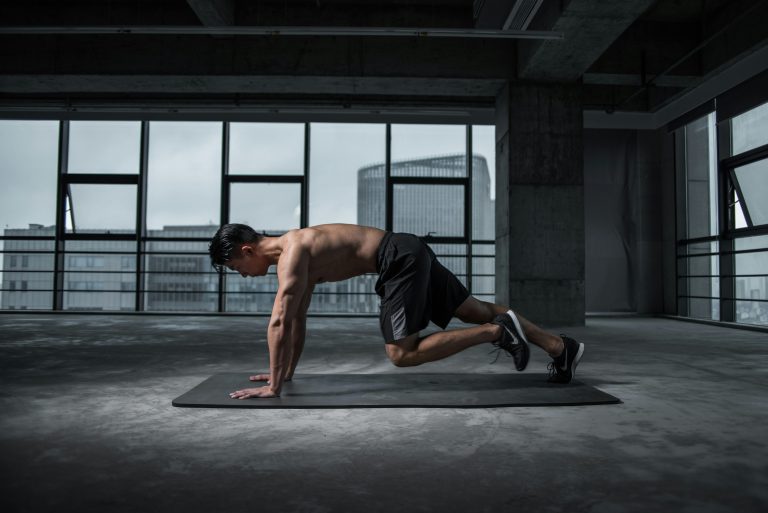Are you curious about which exercise – yoga or Pilates – puts less stress on your body? Well, wonder no more! In this article, we will explore the differences between these two popular forms of exercise and help you understand which one may be more suitable for your body. Whether you’re a seasoned yogi or a Pilates enthusiast, join us as we unravel the secrets behind the stress-relieving benefits of these invigorating workouts.
Table of Contents
ToggleBenefits of Yoga
Improved flexibility
Yoga is well-known for its ability to improve flexibility. The various poses and stretches involved in yoga help to lengthen and stretch different muscle groups, leading to increased flexibility over time. As you practice yoga regularly, you will find that your muscles become more supple and your range of motion improves. This can be beneficial for everyday activities, as well as for preventing injuries during physical activities.
Increased strength
While often seen as a practice focused solely on flexibility, yoga also helps to build strength. Many yoga poses require you to support your body weight, which can help in developing muscle strength and endurance. Holding poses for an extended period of time engages and strengthens different muscle groups, resulting in an overall increase in strength. Additionally, the slow and controlled movements of yoga can help build lean muscle mass.
Enhanced focus and concentration
Another benefit of practicing yoga is the enhanced focus and concentration it cultivates. Yoga encourages you to be present in the moment, to focus on your breath, and to pay attention to the sensations in your body. Through regular practice, you can develop greater mental clarity and an ability to concentrate on tasks more effectively. This can be especially helpful in reducing stress and improving productivity in your daily life.
Benefits of Pilates
Improved core strength
Pilates is renowned for its ability to strengthen the core muscles. The core muscles include not only the abdominal muscles, but also the muscles of the back, hips, and pelvis. Pilates exercises emphasize activating these core muscles, leading to improved stability, posture, and overall strength. Developing a strong core is essential for maintaining proper alignment and preventing injuries.
Increased muscle tone
In addition to improving core strength, Pilates can help increase muscle tone throughout the body. The controlled and precise movements in Pilates target specific muscle groups and encourage muscle activation and engagement. This can result in a more sculpted and toned physique. Pilates exercises can be adapted to target different muscle groups, allowing you to focus on specific areas of the body that you wish to tone.
Improved posture
Posture plays a significant role in overall health and well-being. Poor posture can lead to various issues such as back pain, muscle imbalances, and even digestive problems. Pilates focuses on improving posture by strengthening the core muscles that support the spine and promoting proper alignment of the body. Through regular Pilates practice, you can develop better body awareness and maintain a correct posture, both during exercise and in your daily activities.
Physical Demands of Yoga
Variety of poses requiring strength and flexibility
Yoga involves a wide range of poses that challenge both strength and flexibility. From standing poses like Warrior II and balances like Tree Pose to more advanced poses like Headstand or Crow Pose, each pose requires a combination of strength and flexibility. This variety of poses allows you to work on different muscle groups and improve your overall physical fitness.
Dynamic movements and stretches
Yoga includes dynamic movements and stretches that help to improve overall mobility and flexibility. The flowing sequences and transitions between poses help to warm up the body and increase blood flow, preparing the muscles for deeper stretches. Moving dynamically between poses also helps to build muscular endurance and improve cardiovascular fitness.
Inversions and balancing poses
Yoga often incorporates inversions and balancing poses, which require strength and focus. Inversions, such as Handstand and Shoulder Stand, help to increase blood circulation, improve lymphatic flow, and challenge the muscles in a different way. Balancing poses, like Tree Pose or Eagle Pose, help to improve stability and coordination, while enhancing concentration and body awareness.
Physical Demands of Pilates
Controlled movements and precision
Pilates focuses on controlled movements and precision. Each exercise in Pilates is performed with a specific intention and requires concentrated effort. The emphasis on correct form and alignment helps to activate specific muscle groups and create a sense of control over the body. This controlled approach minimizes the risk of injury and allows for targeted muscle engagement.
Focus on core strength and stability
Pilates places significant emphasis on developing core strength and stability. Many Pilates exercises involve activating the deep muscles of the core to support the body’s movements. By strengthening the core, you can improve overall stability, posture, and balance. The emphasis on core engagement also helps to alleviate back pain and promote proper alignment.
Engaging multiple muscle groups
One of the unique aspects of Pilates is its ability to engage multiple muscle groups simultaneously. Many Pilates exercises require integration of the entire body, rather than isolating specific muscles. This full-body engagement not only enhances overall strength but also helps to improve coordination and body awareness. By working multiple muscle groups together, Pilates promotes functional movement patterns that can carry over into daily activities.
Impact on Joints
Low-impact nature of yoga
Yoga is generally considered a low-impact exercise due to its fluid and controlled movements. Unlike high-impact activities like running or jumping, yoga poses are typically performed with mindful control, reducing stress on the joints. This makes yoga a suitable option for individuals with joint issues or those who prefer a gentler form of exercise. The focus on proper alignment and gradual progression allows for safe and sustainable practice.
Gentle on joints and connective tissues
Yoga’s gentle nature extends beyond being low-impact. The stretching and range-of-motion exercises performed in yoga help to maintain joint mobility and flexibility. This can be particularly beneficial for individuals with conditions such as arthritis or joint stiffness. Regular yoga practice can help alleviate joint pain, improve joint function, and prevent or manage certain joint-related issues.
Impact on Joints
Low-impact nature of Pilates
Similar to yoga, Pilates is also considered a low-impact exercise. Many Pilates exercises are performed in a supported position with controlled movements, minimizing stress on the joints. This makes Pilates a suitable option for individuals with joint sensitivities or injuries. The focus on precise movements and efficient muscle activation ensures a safe and effective workout without unnecessary strain on the joints.
Reduces stress on joints and ligaments
Pilates exercises emphasize proper alignment and stability, which helps to reduce stress on the joints and ligaments. By strengthening the surrounding muscles and optimizing joint mechanics, Pilates can help alleviate joint pain, improve joint stability, and prevent injuries. The low-impact nature of Pilates makes it an excellent choice for individuals recovering from joint-related surgeries or those seeking a safe and effective exercise routine.
Cardiovascular Benefits
Limited cardiovascular benefits of yoga
Although yoga provides various physical and mental benefits, it is not primarily focused on cardiovascular fitness. Traditional yoga practices, such as Hatha or Restorative Yoga, involve slow and controlled movements, which do not significantly elevate heart rate. However, more vigorous yoga styles like Vinyasa or Power Yoga can offer a cardiovascular workout when practiced at a higher intensity. The level of cardiovascular benefit in yoga ultimately depends on the intensity and style of the practice.
Dependent on intensity and style of practice
To maximize the cardiovascular benefits of yoga, it is crucial to choose a style and intensity level that aligns with your fitness goals. Faster-paced yoga styles that incorporate continuous movement and flowing sequences can elevate heart rate and provide a moderate cardiovascular workout. However, it is important to note that yoga alone may not provide the same level of cardiovascular conditioning as high-intensity aerobic exercises, such as running or cycling.
Cardiovascular Benefits
Limited cardiovascular benefits of Pilates
Similar to yoga, Pilates is not primarily designed for cardiovascular fitness. The controlled and deliberate movements in Pilates generally do not elicit a significant increase in heart rate. However, the inclusion of certain aerobic exercises and the overall focus on muscular endurance can offer some cardiovascular benefits during a Pilates workout. Pilates routines that incorporate exercises like jumping jacks or high knees can elevate heart rate and provide a mild cardiovascular challenge.
Routines may incorporate some aerobic exercises
Certain Pilates routines or variations, such as Pilates with cardio or Piloxing (a combination of Pilates and boxing), may incorporate more intense aerobic exercises to increase heart rate and maximize cardiovascular benefits. These routines can provide a well-rounded workout that combines both strength training and cardiovascular conditioning. However, if your primary goal is to improve cardiovascular fitness, it may be more effective to engage in dedicated aerobic exercises in addition to Pilates.
Focus on Mind-Body Connection
Promotes mental well-being and stress reduction
One of the key elements of yoga is the focus on the mind-body connection. Through breathwork, meditation, and mindfulness techniques, yoga promotes mental well-being and stress reduction. The practice of yoga encourages you to be fully present in the moment, letting go of external distractions and connecting with your inner self. This mindful approach can help reduce anxiety, improve mood, and enhance overall mental clarity and relaxation.
Emphasis on mindfulness and relaxation
Yoga sessions often include dedicated periods of relaxation and meditation, allowing you to release tension and quiet the mind. The combination of physical movement, deep breathing, and mental focus promotes a sense of calm and relaxation. This emphasis on mindfulness cultivates self-awareness, emotional balance, and a greater sense of overall well-being.
Focus on Mind-Body Connection
Promotes mental well-being and stress reduction
Similar to yoga, Pilates also promotes mental well-being and stress reduction through its mind-body approach. While the focus in Pilates is more on physical strength and control, the emphasis on concentration and control creates a meditative-like state. By directing your attention to the precise movements and aligning your breathing, Pilates encourages a mental shift from external distractions to internal awareness and mindfulness.
Emphasis on concentration and control
Pilates requires focused concentration and control throughout each exercise. The deliberate and controlled movements engage the mind, allowing for a deeper connection between the body and the mind. This level of concentration not only enhances physical performance but also promotes mental clarity and stress reduction. By practicing Pilates regularly, you can develop better body awareness, improve concentration skills, and find a sense of inner calm.
In conclusion, both yoga and Pilates offer a multitude of benefits for the body and mind. Yoga excels in improving flexibility, enhanced focus, and concentration, while Pilates focuses on core strength, increased muscle tone, and improved posture. Both practices are low-impact and gentle on the joints, making them suitable for individuals of all fitness levels. While limited in cardiovascular benefits, the mind-body connection fostered by both practices promotes mental well-being and stress reduction. Whether you choose yoga or Pilates, incorporating either practice into your routine can lead to improved physical fitness, better overall health, and a greater sense of inner peace.
